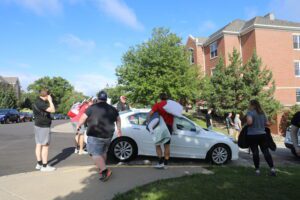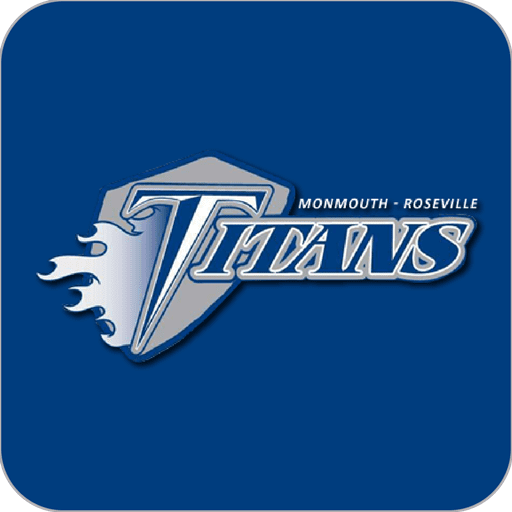One of the most terrifying sights on a sports field is game-stopping, and at times game-ending, injuries.
The Kansas City Chiefs canceled practice on Thursday, June 6, 2024, after defensive end B.J. Thompson suffered a seizure and went into cardiac arrest.
Harold R. Kuntz, a sports anchor at Fox 4 Kansas City reported Thompson was stable as of Thursday afternoon, after medical staff were able to respond immediately, and get him to a local hospital.
This also happened on December 16, 2023, during an English Premiere League match between Luton Town and AFC Bournemouth. Luton captain Tom Lockyer suffered cardiac arrest and collapsed on the field during the match, receiving care on the field for about seven minutes before being carried away on a stretcher.
Lockyer received additional medical treatment in the stadium’s medical facilities, before being transported to a local hospital. The footballer credits his recovery to the medical staff and their quick actions, calling attention to learning CPR.
“I cannot stress enough how important it is for as many people as possible to know CPR. It literally saves lives, like mine,” Lockyer says on an Instagram post.
Abraham Kocheril, MD, director of Cardiac Electrophysiology at OSF HealthCare Cardiovascular Institute in Urbana, Illinois, says his interest in athletes and sudden cardiac death started back in 1993. Dr. Kocheril was at the Medical College of Georgia at the time and began focusing on cardiac arrests in sports as a large part of his research.
In 1995, Dr. Kocheril began working with the University of Illinois athletics program to look into sports screenings and treatment pathways. In 2009, Dr. Kocheril and colleagues across the United States formed the National Sports Cardiology Network.
Dr. Kocheril says an underlying condition is the main reason athletes suffer cardiac arrests during a sports match. Underlying conditions could be coronary artery disease, an irregular heartbeat, or a congenital heart defect.
“Exercise is a pretty significant stress on the heart,” Dr. Kocheril says. “If you have one of these underlying conditions and you add the strain of vigorous exercise, you can bring on one of these rhythm disturbances.”
For kids, Dr. Kocheril says, cardiac arrests in athletics normally come from conditions they were born with. Hypertrophic cardiomyopathy (HCM) is the most common condition. It affects the heart’s left ventricle, which is the main pumping chamber of the heart. Kocheril adds that only 0.2% of athletes have these kinds of conditions.
Lockyer’s cardiac arrest isn’t the only time a soccer player has suddenly collapsed, stunning players, staff and fans alike. In June 2021, Danish midfielder Christian Eriksen collapsed on the pitch during Euro 2020. Similar to Lockyer, he received life-saving treatment on and off the pitch and lived.
Nearly nine months later, Eriksen returned to competitive play in the English Premiere League for Brentford, he now plays for Manchester United.
Introducing the Implantable Cardioverter Defibrillator (ICD)
But how did Eriksen return to action so soon after being so close to death? He now wears an implantable cardioverter defibrillator (ICD), a small electronic device connected to the heart. It monitors the heart closely and regulates fast, potentially life-threatening electrical problems with the heart according to Johns Hopkins Medicine.
This takes Dr. Kocheril back to another world-renowned soccer player, Anthony Van Loo.
“He had an event, they figured out what it was, received an ICD and they allowed him to continue playing,” Dr. Kocheril says. “The next time he collapsed, he drops to the ground, you see a jolt, and he’s awake again. Then he’s able to go back to playing.”
Van Loo was just 20 years old when he suffered a cardiac arrest due to cardiac arrhythmia, or irregular heartbeat. While playing for the Belgian first division team KSV Roselare in 2009, his ICD shocked his heart back into normal rhythm.
How can sudden deaths be prevented in athletic events?
Other than using an ICD, Dr. Kocheril says awareness before athletic events is crucial.
“Oftentimes there are symptoms with exercise before the sudden death event that warn you this is happening,” Dr. Kocheril says.
These symptoms could be chest discomfort, shortness of breath, dizziness, unusual sweating, heart rhythm abnormalities, and discomfort in other areas of the body.
“The key is to pay attention and image the artery somehow to see if that’s going on,” Dr. Kocheril says.
Like what happened with Lockyer and Eriksen, Dr. Kocheril says are perfect examples of why having Automated External Defibrillator (AED) nearby and knowing CPR is important.
“When somebody collapses you want to start CPR right away and keep the circulation going. Then attach the AED. If it’s a shockable rhythm, deliver the shock,” Dr. Kocheril says.
Dr. Kocheril says another preventive measure is knowing your own family history. If someone in your family had a sudden cardiac arrest during exercise or an athletic event, it’s important to have your kids screened by a physician, preferably someone with expertise in sudden cardiac arrest.
Aside from sports physicals, cardiologists can have athletes undergo electrocardiograms (EKGs), stress tests, and other cardiac screenings.
Seconds Saves Lives
“If somebody is down for nine minutes before you start resuscitation, their chances of survival are almost zero. For every one minute, you’re losing 10% [chance of survival],” Dr. Kocheril emphasizes.
GPS Vests
Another way sports clubs are looking to keep a closer eye on players is through GPS vests. These monitors, that look like sports bras, measure a players’ performance during training and matches. The goal is to improve a team’s fitness but also to decrease injuries. Everton FC, an English Premiere League club, says the GPS pod sits between the player’s shoulder blades. Everton players also wear a heart rate strap that goes across the chest.
Learn more
If you have any concerns that you or your child may have an underlying cardiac condition, reach out to your primary care provider. After consultation, they can refer you to a cardiology specialist for appropriate screenings.
***Courtesy of OSF HealthCare***















